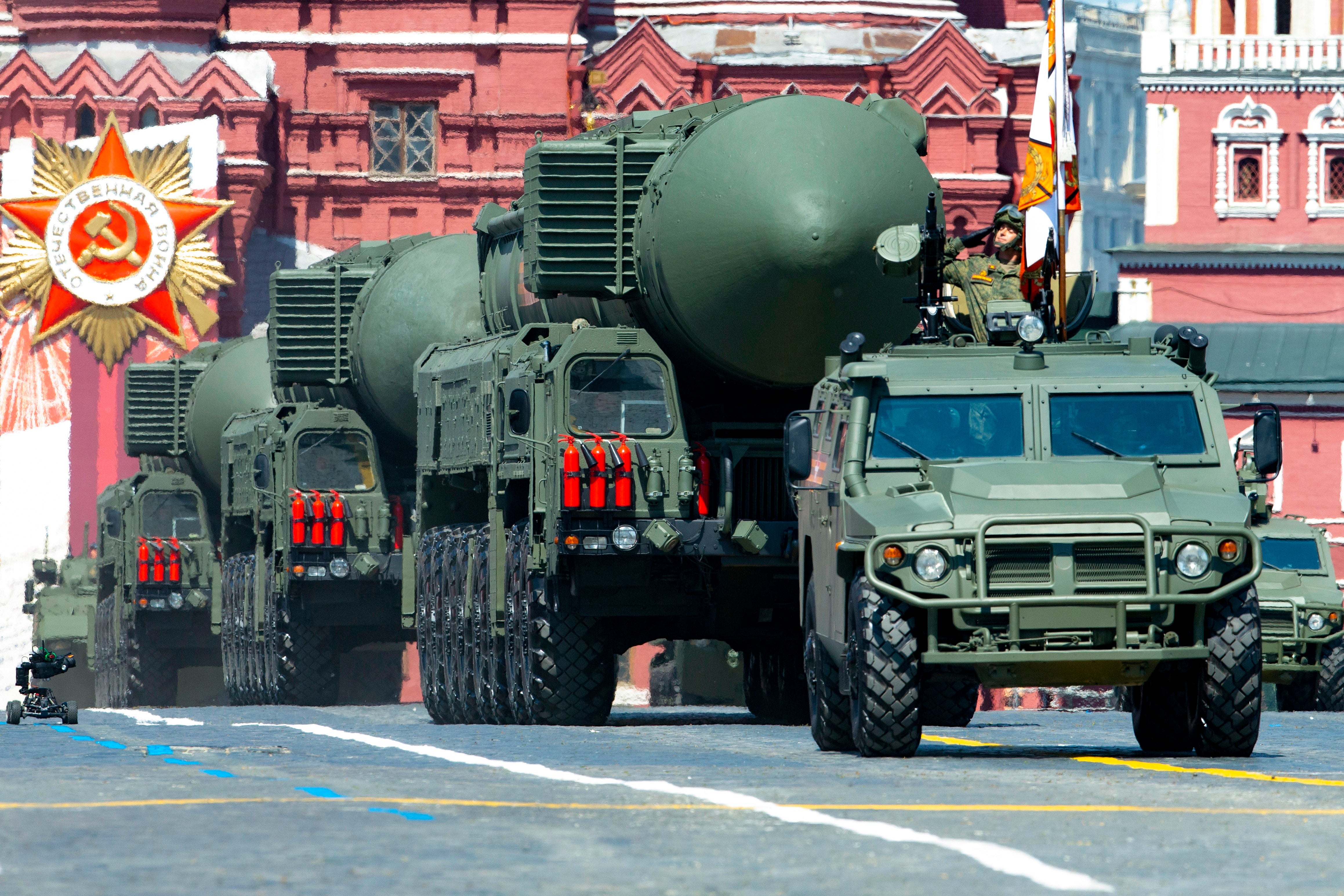Ukraine-Russia crisis: What to know as tension grinds on
Amid its tensest standoff with the West since the Cold War, Russia plans to demonstrate its nuclear might this weekend

Amid its tensest standoff with the West since the Cold War, Russia plans to give its nuclear weapons apparatus a practice run this weekend.
The multiple practice launches of intercontinental ballistic missiles and cruise missiles set for Saturday follow a warning from U.S. President Joe Biden that Russia could invade Ukraine within days.
NATO says Russian President Vladimir Putin has failed to keep his promises of withdrawing some of an estimated 150,000 troops assembled around Ukraine’s borders, dashing hopes for an imminent de-escalation of the crisis. The Kremlin insists it has no plans to invade,
The United States and other alliance members to keep up the diplomatic pressure to deter a possible invasion of Ukraine. Biden is due to discuss Russia and Ukraine with trans-Atlantic leaders in a Friday phone call.
Vice President Kamala Harris is also taking a front seat. Harris is attending the annual Munich Security Conference this weekend in Germany, where she aims to cement the unity of Washington’s European allies. U.S. Secretary of State Antony Blinken will also be there.
Here’s a look at what is happening where and why:
WHAT’S GOING ON AT THE KREMLIN?
The Kremlin says Putin will watch drills involving Russia’s strategic nuclear forces from the situation room at the Russian Defense Ministry.
The Defense Ministry said Putin will personally oversee Saturday's display of his country's nuclear might. Notably, the planned exercise involves the Crimea-based Black Sea Fleet. Russia annexed the Crimean Peninsula from Ukraine in 2014.
Meanwhile, NATO is beefing up its eastern regions.
The U.S. has begun deploying 5,000 troops to Poland and Romania. Britain is sending hundreds of soldiers to Poland and offering more warships and planes. It also is doubling the number of personnel in Estonia and sending tanks and armored fighting vehicles. Germany, the Netherlands and Norway are sending additional troops to Lithuania.
And the Biden administration announced Friday it has approved a $6 billion sale of 250 Abrams battle tanks and related equipment to Poland.
WHAT ARE THE DIPLOMATIC EFFORTS TO PREVENT WAR?
The White House says Biden will have a phone call Friday afternoon with trans-Atlantic leaders. The Canadian prime minister’s office says the call will include the leaders of Canada, France, Germany, Italy, Poland, Romania, the United Kingdom, the European Union and NATO.
Biden made some grim warnings Thursday, saying Washington detected more Russian troops moving toward the border with Ukraine.
U.S. Defense Secretary Lloyd Austin reinforced that message Friday in Warsaw. He said everything indicates that Russia could launch an attack “at any time,” and the U.S. doesn’t have any evidence of Russia moving its troops away from the border.
German Foreign Minister Annalena Baerbock expressed regret that Russian leaders had declined to attend the Munich security conference, which provides a forum for discussion.
“Particularly in the current, extremely threatening situation, it would have been important to also meet Russian representatives in Munich,” Baerbock said. Even tiny steps toward peace would be “better than a big step toward war,” she added.
Speaking to French broadcaster LCI on Friday, French Foreign Minister Jean-Yves Le Drian said: “Everything is possible, a massive Russian intervention but also a (continuing) diplomatic discussion.”
WHAT’S HAPPENING ON THE GROUND?
Biden said at the White House on Thursday that the U.S. has reason to believe that Russia is “engaged in a false flag operation” to give it a pretext to invade Ukraine. And there are plenty of hotspots and potential flashpoints around Ukraine that could trigger a full-scale military engagement.
Some are concerned the nearly 8-year-old separatist conflict simmering in eastern Ukraine could provide the needed cover for Moscow. The area saw intensified shelling and apparent cyberattacks over the past two days.
In the strip of land where pro-Russia separatists for years have fought against Ukrainian government forces, a group of international monitors tasked with keeping the peace reported more than 500 explosions in the 24 hours ending Thursday midday.
Early Friday, separatist authorities in the Luhansk and Donetsk regions reported more shelling by Ukrainian forces along the tense line of contact.
Ukrainian officials charged that the rebels intensified the shelling in the hopes of provoking a retaliatory attack by government forces.
“There have been many escalations, illegal weapons, artillery and more” in the past 24 hours, Danish Foreign Minister Jeppe Kofod said Friday.
“It is impressive what the Ukrainians have also managed to do, to hold back in relation to the provocations they are exposed to on a daily basis,” Denmark's Ekstra Bladet newspaper quoted him as saying.
____
AP reporters around the United States and Europe contributed.
___
Follow AP's coverage of the tensions between Russia and Ukraine at https://apnews.com/hub/russia-ukraine